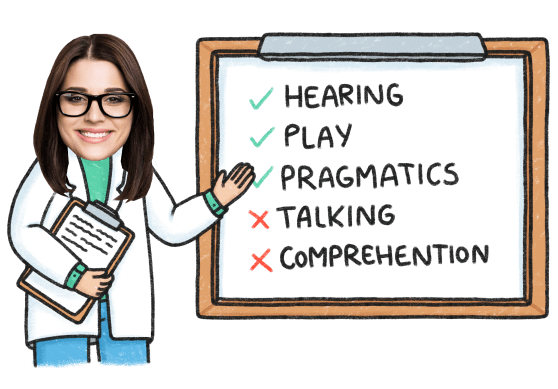Kids' School Readiness: An All-in-One Guide
In This Article
How do you know when it’s time to enroll your child into a school program? Should they know any specific skills? According to The Early Childhood and Learning Center, school readiness is foundational across early childhood systems and programs.
Welcome to our series of “All-in-One” guides connecting blog writers around an important topic that is explored in-depth on our blog page. The subject of this guide explores everything parents need to know about school readiness.
It essentially means children are ready for school, families are ready to support their children’s learning, and schools are ready for children.
Many head start programs view school readiness as children possessing the skills, knowledge, and attitudes necessary for success in school and for later learning and life. Physical, cognitive, social, and emotional development are all essential ingredients of school readiness. These are skills that you and your potential school can look at to make sure your child is ready to attend a program.
Getting Ready for School? Try the learning app Speech Blubs
The more you practice, the more you learn! Try the Speech Blubs app for fun and engaging language learning with your little one.
Boost Your Child’s Speech Development!
Improve language & communication skills with fun learning!

What Do Schools Look for in Children?
Programs must establish school readiness goals that are appropriate for the ages and development of enrolled children in the following domains:
- Approaches to Learning
- Social and Emotional Development
- Language and Literacy
- Cognition
- Perceptual, Motor, and Physical Development
Schools are also responsible for implementing and measuring progress toward school readiness goals. This helps programs individualize for each child and ensure that children know and can do what is needed to be ready for kindergarten. This is also important in determining if children are not ready to enter kindergarten or if there might be learning disabilities. If this is the case, early screening and intervention can take place and an IEP can be drafted before even entering kindergarten.
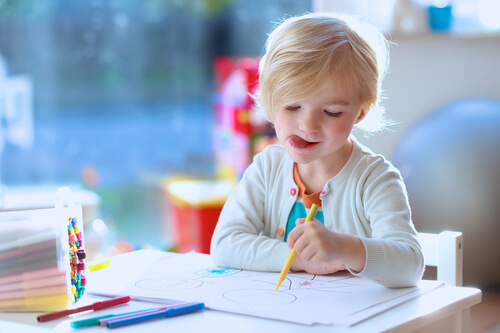
Goals of School Readiness
Each agency must use the five domains (seen below) as a way to make their goals for children. Agencies need to articulate how:
- Their goals appropriately reflect the ages of children participating in the program – goals are divided into infant/toddler and then preschooler domains
- The curriculum and child assessment(s) address or align with the program’s established goals
- Parents were involved in the development of the goals
These also need to target different age-appropriate skills to prepare children for kindergarten. Although the infant/toddler and preschooler domains are the same, their subcategories vary due to the assumed growth and learning that occurs between those ages. For instance, infants and young toddlers are expected to follow simple 1-step directions, but preschoolers that are ready to advance to kindergarten can follow simple 2-3-step directions without the need for clarification or repetition.
One thing to remember, no matter the age of your child, is that parental involvement is very important. If your child is in preschool already, I’m sure you are having conversations with your child’s classroom teacher frequently about their skills and the advancement to kindergarten. If this isn’t taking place, you should feel comfortable getting updates or asking your facility to provide information regarding any concerns about your child’s education.
Most preschools use parent-communication apps such as Class Dojo. This is one way to foster communication between teachers and parents. If your school does not have this or another system, it might be worth bringing to the attention of the owner.
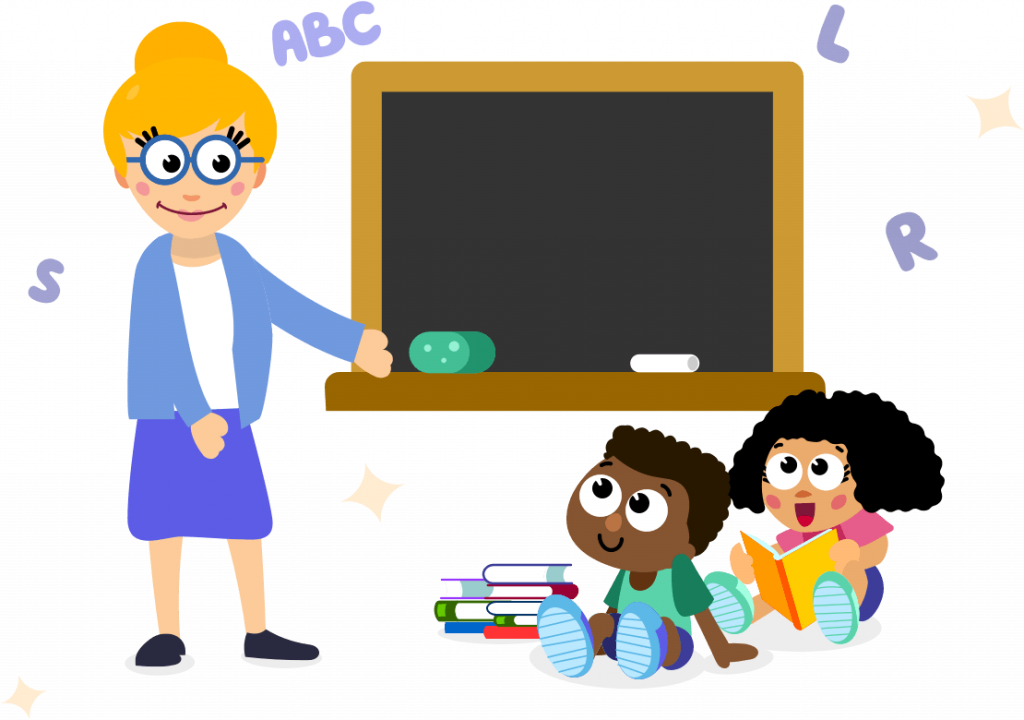
Guiding Principles
Each Facility must be aligned with common principles. These principles have been around since schools have been founded. They underlie the program policies and practices that prepare young children for success in school and beyond. These principles include:
- Each child is unique and can succeed. Children are individuals with different rates and paths of development. Each child is uniquely influenced by their prenatal environment, temperament, physiology, and life experiences. With the appropriate support, all children can be successful learners and achieve the skills, behaviors, and knowledge to be successful with their education.
- Learning occurs within the context of relationships. Caring families, teachers, and other adults matter in a young child’s life. Responsive and supportive interactions with adults are essential to a child’s learning.
- Families are children’s first and most important caregivers, teachers, and advocates. Families must be respected and supported as the primary influence in their child’s early learning and education. Their knowledge, skills, and cultural backgrounds contribute to children’s school readiness.
- Children learn best when they are emotionally and physically safe and secure. Nurturing, responsive, and consistent care helps create safe environments where children feel secure and valued. In these settings, children are able to engage fully in learning experiences.
- Areas of development are integrated, and children learn many concepts and skills at the same time. Any single skill, behavior, or ability may involve multiple areas of development. For example, as infants gain fine motor skills, they can manipulate objects in new ways and deepen their understanding of cause and effect. As preschoolers gain new verbal skills, they can better manage their emotions and form more complex friendships.
- Teaching must be intentional and focused on how children learn and grow. Children are active, engaged, and eager learners. Good teaching practices build on these intrinsic strengths by providing developmentally appropriate instruction and opportunities for exploration and meaningful play.
- Every child has diverse strengths rooted in their family’s culture, background, language, and beliefs. Responsive and respectful learning environments welcome children from diverse cultural and linguistic backgrounds. Effective teaching practices and learning experiences build on the unique backgrounds and prior experiences of each child.
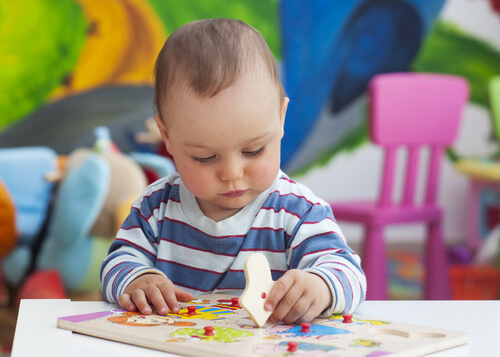
School Readiness Goals and How to Work on Them at Home
The first thing you need to know is that most states break up goals into two categories: infant/toddler domains and preschool domains. This is done because infants cannot do what toddlers can and a younger toddler cannot do what a soon-to-be preschool graduate can do. These domains are divided into several categories:
- Approaches to learning
- Social and Emotional Development
- Speech and Language Development
- Cognition
- Perceptual, motor, and physical development
Infant and Toddler Domains
Approaches to Learning
There are several different areas involved when it comes to learning. These areas can include, emotional/behavioral self regulation, creativity, curiosity, and cognitive self-regulations (executive functioning). Each one of these sub areas have goals that infants and toddlers should be able to master by 36 months of age.
Birth to 9 Months
Engages with familiar adults for calming and comfort, to focus attention, and to share joy.
From birth to 9 months, kids are just starting to “wake up” and are exploring their new worlds. At this point in their lives, they rely heavily on the comfort and care of adults that are familiar to them. They actively seek this attention when needed. When working on this at home, just make sure you are spending time with your little one. Talk or sing to them, narrate what you are doing, and give them tons of love and cuddles!
8 to 18 Months
Seeks to be close, makes contact, or looks to familiar adults for help with strong emotions.
As children move out of their early infancy and progress towards toddlerhood, you may notice separation anxiety or even stranger anxiety start to come into play. This is a normal part of growing and is something experts and teachers will look for as your child develops. When your child is experiencing this sometimes extreme feeling, make sure you reassure them, comfort them and explain the situation so that they can adjust easier the next time the situation arises.
16 to 36 Months
Uses various strategies to help manage strong emotions, such as removing oneself from the situation, covering eyes or ears, or seeking support from a familiar adult.
Toddlerhood is in full swing at this point, and so are those tantrums and meltdowns. What educators look for at this point in development is that the child can handle those aggressive mood swings and use self-regulation strategies to calm themselves down. They should seek out a parent, guardian, or trusted adult, as well. At home, it’s important to teach these self regulation strategies to our children. It’s helpful for them to know it’s okay to get angry and upset, but that it’s also helpful for them to know how to deal with those emotions safely.
By 36 Months
- Looks to others for help in coping with strong feelings and emotions.
- Uses strategies, such as seeking contact with a familiar adult or removing oneself from a situation to handle strong feelings and emotions.
By 36 months, when most kids might be moving into Pre-K 3, kids should have a strong handle on those emotional skills that were just developing at 18 months. They can look to others for help and use coping strategies that they’ve been taught at home or at school. If your child is struggling in this area, behavior management or emotional management charts work great! Just using stickers for every day that they handle their emotions well is a good motivation for most children.
When dealing with emotions, schools will also take into consideration the strategies children use to manage strong emotions may vary based on cultural background. For example, some children may be much more likely to use self-soothing strategies, while others may seek out comfort from adults.
Social and Emotional Development
The second area that is focused on when a child enters school is social and emotional development. This is how a child initiates, builds, and maintains interactions and relationships with those around them.
Birth to 9 Months
Interacts in predictable ways with familiar adults. Responds positively to familiar adults’ efforts to help with stressful moments.
Just like previously mentioned, this is the stage where your child is just learning how to trust their guardians. They know and depend on you for food, clothing, shelter, and love. This is the building block for all future relationships and friendships. Babies may smile, coo, or reach towards people that they know who provide them comfort and safety at this point.
8 to 18 Months
Looks to familiar adults for emotional support and encouragement. Reacts or may become distressed when separated from familiar adults.
From 8-18 months your child will change significantly in all areas of development. This is the point where they might give you a hard time when separating. The main thing to remember is to be consistent. If you bend and break every time they cry, they are only learning they get what they want when their reaction is extreme. Stay firm, stand your ground, and get them on a routine. It may be hard at first, but it will aid in their transition from preschool to kindergarten and beyond.
16 to 36 Months
Engages in positive interactions in a wide variety of situations with familiar adults. Looks to or seeks familiar adults for comfort when distressed or tired.
Here’s where the fun begins when social skills. Kids love to be around other kids and adults. They watch and try to learn everything from us. It’s important to play with your child and engage them in different situations. Take them to the park, the library, the zoo, and have fun conversations about what is happening in every situation.
By 36 Months
- Shows emotional connection and attachment to familiar adults.
- Turns to familiar adults for protection, comfort, and getting needs met.
By the age of three, children will show an emotional connection to adults that they know. This can be family members, friends, or even teachers. They will turn to these adults for comfort, protection, and to make sure their needs/wants are met.
If you are concerned about your child’s social and emotional development, or feel they are behind in any of these areas, it’s important to talk to your pediatrician and see if a referral to a speech-language pathologist might be warranted. An SLP can evaluate and address these skills and get your child back on track so that they are progressing towards their goals!

Language Development
Language development refers to emerging abilities in listening and understanding (receptive language) and in using language (expressive language). Babies attend to the sounds of language in their environment before they are born. In the context of nurturing, responsive adult relationships, infants rapidly learn to communicate with facial expressions, gestures, and looks.
They move from babbling to understanding many words spoken to them and then uttering or signing their first words. Toddlers learn to speak new words at an amazing pace and use language to express their needs, ask questions, and engage in short conversations.
Expand Your Child’s Vocabulary and Get Ready for School!
Boost Your Child’s Speech Development!
Improve language & communication skills with fun learning!

Language skills continue to expand, and by the end of the preschool period, children:
- speak in adult-like sentences
- tell and retell stories
- use verbal humor
- engage in group discussions.
Preschoolers are sophisticated language users who harness language in order to take in new and complex information and organize their world. As they delve into new learning experiences, they add mathematical or scientific terms to their vocabulary, such as semi-circle or T-Rex. They begin to understand word categories, such as hammers and screwdrivers are tools, and relationships among words, such as the opposite of up is down. Preschoolers with strong language skills are prepared to be successful learners in school.
Preschoolers are beginning to grasp how written language is structured into sounds and symbols. They play rhyming games and learn the names of letters and associated sounds. They take pride in recognizing their name in print and practice writing it. Preschoolers begin to understand print conventions and the different functions of print in picture books or grocery lists.
As they listen to and talk about story books or retell and enact events, they gain an understanding of sequence, character development, and causal relationships. When preschoolers are engaged literacy learners, they are laying the foundation for becoming capable readers and writers in school.
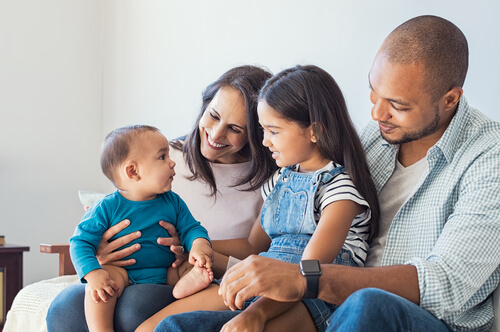
Developmental Progression of Speech and Language
When looking at speech and communications development, there are several key areas that are looked at in determining if a child is ready for school. These areas include vocabulary, attending/understanding, emergent literacy, and communication/speaking.
Birth to 9 Months
Attends to verbal and non-verbal communication by turning toward or looking at a person. Participates in reciprocal interactions by exchanging facial expressions and language sounds with familiar adults.
When children are just born, it looks like they aren’t communicating with you. That’s simply not true! Babies attend to verbal and nonverbal communication by turning their heads, smiling, cooing, and those first laughs. Cultural expectations can influence adult-child interactions in many ways. For example, in some cultures, children are taught to show respect to adults by making direct eye contact when being spoken to. In other cultures, children are taught that respect is demonstrated by avoiding direct eye contact. When at home, make sure you are engaging with your child on a daily basis. Talk to them, sing to them and make sure you respond to any verbal interaction that they attempt.
8 to 18 Months
Shows understanding of the meaning of familiar caregivers’ verbal and non-verbal communication and responds with facial expressions, gestures, words, or actions, such as looking at people or objects being referred to.
From 8-18 months, babies start to understand some language and simple 1-step directions. For example, my son is 11 months and can understand, “go drink your bottle.” At this stage, if you ask a child, “where is your block,” they should have had enough exposure and vocabulary to look at the object that you are asking them about. Reading can help with the development of this skill. If your child seems to not like reading, that’s okay. Just make sure you are talking to them and narrating everything that you are doing throughout the day. That’s just as good as reading!
16 to 36 Months
Shows recognition of words, phrases, and simple sentences. Participates in conversations in ways that show understanding by following comments or suggestions with actions or behavior.
Now that your little tot is developing into toddlerhood, their speech and language will really start to blossom. This is where they will start to recognize words, attempt to use words to communicate and may even repeat words clearly. When having conversations, try to include your child. They may not speak clear words, but they will start to use body language and facial expressions to clearly express what they are trying to communicate.
By 36 Months
- Shows understanding of some words and phrases used in conversation, such as by responding to simple questions.
- Shows comprehension of simple sentences, such as by listening to and following one- or two-step directions.
By 36 months (three years old), your child should consistently be using words and phrases to communicate with peers and adults. They will also respond to questions and will comprehend simple sentences. It’s ok if they can’t always answer the question correctly, that will come in time, but the important step at this level is that they show engagement and an attempt to communicate effectively. Practice this step at home by giving your child simple tasks to do, letting them participate in simple activities in the kitchen, ask them about their day, and talk about the plans for the next day.
Once your child hits three, you will see the most rapid growth in vocabulary, words, and signs used. Most children have a vocabulary of 300 words at this point. If it helps, you can keep a word journal of what your child says to make sure that they are on track. Children who are from a bilingual household may have a combination of 300 words between the two languages, which is also fine!
Cognitive Development for Preschoolers
Children play an active role in their own cognitive development by exploring and testing the world around them, but they also need support from parents, teachers, and other adults. When infants and toddlers feel safe and secure, they are more willing to experiment with their world, such as discovering how a pull toy works, observing what happens when they turn on a faucet, and trying out different behaviors to see how people react. In the process, they begin to understand basic mathematical, spatial, and causal relationships.
Toddlers also explore concepts through a variety of symbolic activities, such as drawing and pretend play. More and more, young children can rely on their developing memory to help them make sense of the world. All this activity in the first three years lays the foundation for the more complex cognitive skills that preschoolers develop.
Math for Preschoolers
Cognitive development is presented as two different domains for preschoolers — Mathematics Development and Scientific Reasoning — to reflect the increasingly complex and more differentiated cognitive abilities of this age period. Mathematics development in preschoolers refers to understanding numbers and quantities, their relationships, and operations, such as what it means to add to and take away. Mathematics also includes shapes and their structure, reasoning, measurement, classification, and patterns. Preschoolers are eager to measure their height to see how much they have grown and to chime in with repeating patterns in books and songs.
Increasingly, children use math strategies to solve problems during daily activities, such as figuring out how many more cups are needed at snack time. Because math includes generalizations and abstractions, math skills help young children connect ideas, develop logical and abstract thinking, and analyze, question, and understand the world around them. Children develop math concepts and skills through active exploration and discovery in the context of stimulating learning opportunities and intentional teaching strategies.
Scientific Reasoning for Preschoolers
Scientific Reasoning refers to the emerging ability to develop scientific knowledge about the natural and physical worlds, learn scientific skills and methods, and continue developing reasoning and problem-solving skills. For preschoolers, the scientific investigation includes making observations, recording them, talking about them, and analyzing them. Their investigations reflect their natural interests in how things work, in plants and animals, their bodies, and weather.
In the process of investigating, they can learn to use measurement and observational tools, such as a ruler and a magnifying glass. During the early childhood years, science provides opportunities for rich vocabulary learning and collaboration with peers and fosters a sense of curiosity and motivation to learn. Problem-solving and reasoning become more complex as preschoolers gain new abilities to ask questions and gather information. Their inclination to be curious, explore, experiment, ask questions, and develop their own theories about the world makes science an important domain for enhancing learning and school success.
Because cognitive development encompasses a broad range of skills, behaviors, and concepts, children display great individual variation in their development from birth to 5. Prior experiences, cultural and linguistic backgrounds, temperament, and many other factors can impact the rate and course of cognitive development. Children with disabilities may require extra support as they use their senses and bodies to explore or as they describe their scientific investigations. The instruction and learning opportunities young children experience set the stage for their cognitive development and success.
Developmental Progression for Math and Reasoning
36 to 48 Months
Says or signs some number words in sequence (up to 10), starting with one. Understands that counting words are separate words, such as “one,” “two,” “three,” versus “onetwothree.”
Math progressions from 36-48 month include saying numbers in sequence. They will start at the number one and work their way up. They will also start to separate the numbers into their own words, as opposed to saying them in a group. To work on this at home, play some simple board games and have them count their spaces as they play the game!
Uses the five senses to observe objects, materials, organisms, and events. Provides simple verbal or signed descriptions. With adult support, represents observable phenomena, such as drawing a picture.
As their reasoning progresses, they are able to use their five senses to describe what they are experiencing throughout the day. When talking with your toddler, make sure you ask them what they say, felt, ate, and heard. This will target the reasoning goal.
48 to 60 Months
Makes increasingly complex observations of objects, materials, organisms, and events. Provides greater detail in descriptions. Represents observable phenomena in more complex ways, such as pictures that include more detail. Says or signs more number words in sequence.
Once children hit 48 months, we see another leap in their ability to do simple math and reasoning. They will begin providing greater detail in the things they see, the objects they encounter and can describe pictures in more detail. They will also start to sign or say more numbers in words in sequence. They won’t just stop at 10, they might get to 15 before becoming stuck on what number comes next.
By 60 Months
Identifies the five senses (smell, touch, sight, sound, taste) and uses them to make observations.
Uses observational tools to extend the five senses, such as a magnifying glass, microscope, binoculars, or a stethoscope.
Describes observable phenomena using adjectives and labels, such as lemons taste sour and play dough feels sticky.
Represents observable phenomena with pictures, diagrams, and 3-D models.
Counts verbally or signs to at least 20 by ones.
By 60 months, or 5 years old, children are almost ready to progress to Kindergarten. At this age, they are able to identify all of their five senses and use them to make observations and give greater details about their world. They can also use simple science equipment, such as a magnifying glass, to extend their knowledge of the five senses and their ability to describe and narrate their day.
Their speech also progresses and they are able to use adjectives more consistently and label objects. They can start using words such as sticky, sour, or sweet to describe their food choices. Once they turn five, they are able to verbally or use their fingers to count to 20!
Some children with physical limitations may have difficulty getting or exploring objects. To support their learning, adults can observe the child’s interests and provide engaging materials and experiences.
